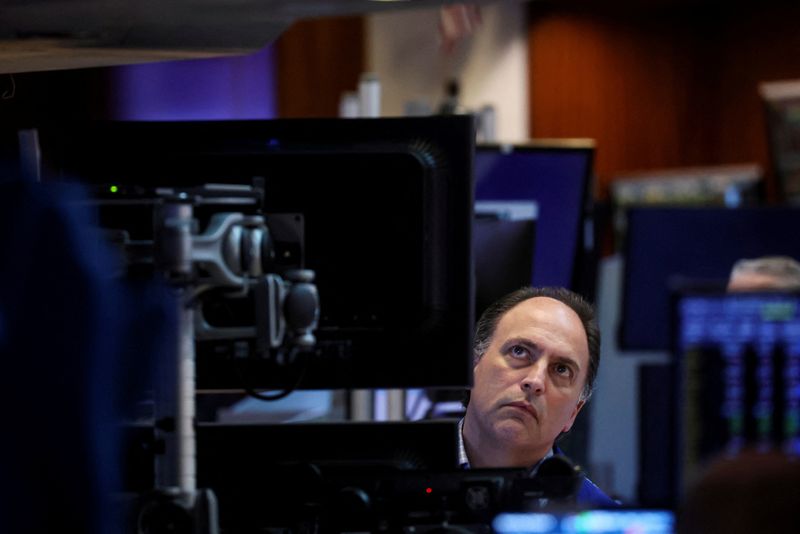© Reuters
Investing.com – The pulsating heartbeats of stock traders can be heard in the turbulent U.S. stock markets, as CNN Money’s Fear & Greed Index currently stands at an alarming 74 points – right in the middle of the dangerous territory of “greed”. With each passing day, this insatiable hunger for returns seems to intensify further and cross the border into “extreme greed”. The last time the sentiment barometer stood this high was at the end of January 2023, when the lost over 9% of its value within six weeks.
In this respect, the stock market community should at least be cautious, as the current level of the sentiment index could be a harbinger of an impending stock market correction that has the potential to shake the U.S. stock indices, at least in the short term.
The Fear & Greed Index serves as a barometer for the emotions that dominate the markets. It combines various factors such as market volume, sentiment indicators, stock momentum, and volatility to provide a comprehensive picture of the current state of investor psychology. From the deepest depths of fear to the dizzying heights of greed, this index reflects how market participants make their decisions and how this can affect price trends.
But what exactly does it mean when the Fear & Greed Index moves so persistently in the direction of “extreme greed”? Well, it is a clear sign that overheating is imminent. When greed overpowers reason and investors become blinded by greed, they are at risk of falling into a trap. Prices rise and rise, but eventually, the day comes when reality catches up with them and the markets are corrected forcefully. This correction can lead to a sharp decline in stock prices and force investors to freeze their gains or even accept losses.
Historically, “extreme greed” has often had dire consequences and is considered a harbinger of a stock market correction. This should be a lesson to us all that greed is not a reliable advisor in investment decisions and that extreme caution is required when the Fear & Greed Index climbs to such heights, especially since the market breadth in U.S. stock indices continues to leave much to be desired and only a handful of stocks support the S&P 500 this year.
The underlying tone of the current market is aptly by Lance Roberts, chief portfolio strategist and economist at RIA Advisors. He emphasizes: “… a narrow market rally buoys the index, excites investors, and creates dreams of unimaginable riches.” However, as an attentive investor, one should not forget that it is equally important to realize profits when expectations exceed fundamental realities, the expert concluded.
Of course, there are also voices claiming that the current greed has a different quality and that we are in a new era where the old rules no longer apply. They argue that the rapid development of technology and the seemingly unlimited possibilities of artificial intelligence, from which mainly Nvidia (NASDAQ:), Microsoft (NASDAQ:), and Super Micro Computer (NASDAQ:) have been able to benefit in recent weeks, have led us into a new economic landscape where there is no turning back. The hype can, of course, continue because the foundation of the markets is still based on human emotions and irrational behavior, but at some point, reality will strike back and stocks will return to reasonable valuations.
The Fear & Greed Index should therefore be understood as an urgent warning. A correction in the U.S. stock indices could be inevitable, and investors should reconsider their strategies to prepare for possible turbulence. Those who have already made substantial profits should consider taking in the profits and reducing their positions. A balanced mix of caution and foresight is the key to not being dragged into the abyss by greed.
(Translated from German)
Read the full article here













